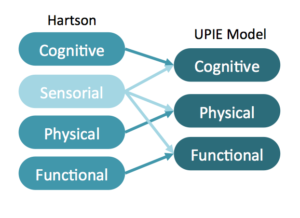A New Model for Improving User-Product Interaction Evaluation, Based on Affordance and Factor Analysis
 (Published Paper)
(Published Paper)
Interaction Design has different definitions in different areas. Generally, it is the creation of physical and emotional dialogues between a person and a product, system, or service that can be experienced during the action and reaction between form, function, and new technology. User-product interaction describes the behavioral relationships between user and product, which are analyzed to understand the tangible actions and apply that knowledge to product design applications, including the design of the symbols that help the user understand the product’s intended use. In any kind of interaction, affordances (characteristics of a product that help users perform tasks) play an important role. Proper evaluation of the role of affordances in these interactions can result in better-designed objects and consequently better user-product interactions. Current methods of evaluation in the user-product interaction design process have not been fully explored, and new, more scientific approaches are needed. In this study, we focused on a statistic evaluation model of the behavioral relationship between user and product. By studying theoretically reviewed, multi-disciplinary papers and projects dealing with affordance and related fields, we summarized and systematically explained how to evaluate user-product interactions by analyzing the affordances, which are generally focused on cognitive, physical and functional information. This paper proposes a new analytics-based, user-product interaction evaluation (UPIE) model which can provide product designers with more informative and reliable interaction data, and ultimately help them redesign and improve user-product interaction.
Bulletin of JSSD (Japanese Society of Science and Design) Vol. 62, No. 5, 2016 Tokyo, Japan.
